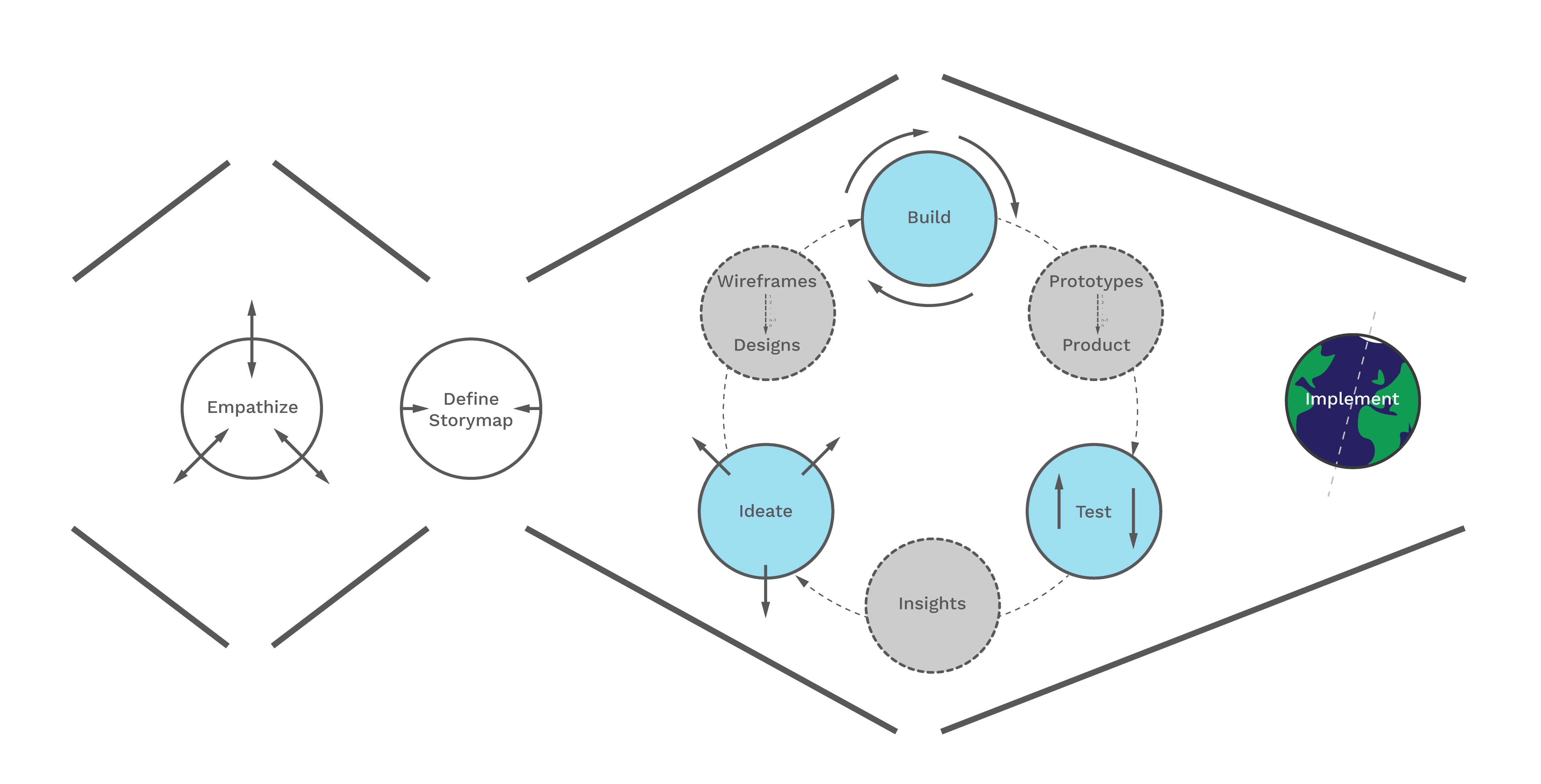

Most of my work was done while being employed by Mimi. There I've been responsible for several products, from B2C products like Mimi's hearing test to B2B focused products like Mimi's software development kit and processing libraries. My responsibilities ranged over the years from detailed design work to product strategy. The examples in this portfolio focus more on the former, because it's easier to show and less sensitive to put out in the open. If you're interested in how I (have) define(d) product strategy, have a look at my writing and or set up a coffee with me!
Empathize/understand: In my problem solving process I always start by understanding what the problem is.
(Re-)define: In my experience almost never is the initial problem the actual thing that needs to be solved. Therefore I redefine the problem. When defining a problem to solve for a product team, what I like to do is to come up with a specific measurable business outcome that we want to achieve.
Iterate: After defining the problem I start iterating. See below.
Implement: At some point the iterations yield a version of the product that sufficiently solves the problem that was defined/re-defined.

Ideate: During the ideate stage I'll start coming up with solutions, initially these can be on the level of breadboards and wireframes, to eventually going more and more concrete and detailed solutions.
Build: After ideation, we can start building, in the beginning these will be rough prototoypes or click dummies to get quick feedback. With additional iterations the outcomes become more concrete, eventually leading to interactive experiences that can be thoroughly tested.
Test: No product leader or designer can place themselves in the shoes of their customers for 100%, therefore it's incredibly important to keep testing. Only by putting the prototypes in front of the eyes of real customers will you get the insights that make or break your product. Insights gather during tests are the inspiration for the next iteration cycle.
I've selected some of my work to highlight. Currently mostly direct links to the projects rather than a description. Click/push the button to go there.